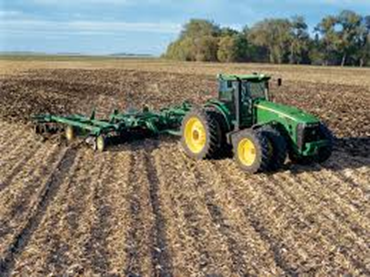I grew up on a small corn and soybean farm in Crawford County, IL. I enjoyed growing up on the farm and helping in the summers. I appreciated the lessons it taught me about making do with what you have and the valuable lessons you can only learn from manual labor. While I decided to leave the family farm for college, I was able to stay connected to agriculture through my education, majoring in Agricultural Engineering at the University of... Read More →
ILSOYADVISOR POST
Fall Tillage Considerations
October 14, 2018
Tillage is a popular practice across Illinois and it still seems to have its place in a high yield soybean production system. It also simplifies decisions that no-tillers must consider such as handling residue, cooler and wetter soils the spring and more potential for seedling diseases and nutrient tie up.
Farmers know that tillage provides two main benefits:
- It blackens and loosens the soil in the fall so it dries and warms more quickly in the spring. In heavier soils in central and northern Illinois and tighter clay soils in the south, tillage can help guarantee a good stand that emerges rapidly – which is a prerequisite to high yields.
- Tillage helps manage all the corn residue after 200+ bushel corn, in continuous corn rotations and any cornstalks that don’t decay readily enough in the field.
Fall tillage begins with spreading residue, especially corn residue created by a 200-bushel corn crop. Cornstalks can be a headache because with today’s Bt traits, good plant health and stay green characteristics, they just don’t decay and disintegrate as rapidly as in the past.
Whether you practice reduced tillage or no-till, properly spreading residue is the start to managing it. Take a good look at the spreader behind your combine and how it is set up and operating. Distribution is very important, especially when you want bumper crops. Remember you are spreading chaff and coarse residue. Chaff is lightweight and affected by the wind, and more difficult to spread. Coarser material spreads more equally using spreaders with batts.

Many growers have adopted chopping corn heads which will slice cornstalks as they are pulled down through the stalk rollers. The key to residue decomposition is slicing and dicing into small pieces and fracturing the stalks and then anchoring it down with soil to introduce microbes into the material. Decomposition needs moisture, warmer temperatures and an available supply of carbon, nitrogen and sulfur. Not all these requirements are available during the fall and winter and this delays decay. Ever notice how the stalks from corn harvest in early to mid-September blacken before it turns cold in the fall compared to stalks from corn harvested in late October and November? Winter months aren’t good for decay.
Farmers till to process and incorporate residue, fertilizer and chemicals; blacken the soil so it warms and dries faster in the spring, and prepare an even seedbed for next spring. However, fall tillage usually leaves the field rough and requires a spring finishing pass to create a smooth, clod-free seedbed. No matter what your goal, adjust and run the tool so it will achieve that objective for the fall.

When doing fall tillage first consider soil conditions. For tillage to work properly, soil has to be relatively dry to fracture the soil and process residue without causing compaction. If you do primary tillage, fall is a better time because the soil is in more fit condition. Moisture is below field capacity; compaction is less of a risk, soil hasn’t frozen yet, and you won’t pull up wet clods of soil. And if shearing forces do compress the soil, winter freeze and thawing and wetting and drying will break up clods and loosen compact layers, either horizontal or vertical.
Remember, tillage is about processing and incorporating residue, fracturing density layers in the soil and blackening the soil so it will warm and dry in the spring. And in the process you can prepare a seedbed. However, tillage doesn’t necessary improve soil tilth, health or productivity. Conventional tillage tends to degrade natural soil structure while creating a temporary solution for planting the next crop.
Do you do fall tillage know the reason you are doing it and use the right tools for the job.
Soybean agronomist Daniel Davidson, Ph.D., posts blogs on topics related to soybean agronomy. Feel free to contact him at djdavidson@agwrite.com or ring him at 402-649-5919.





Comments
Add new comment